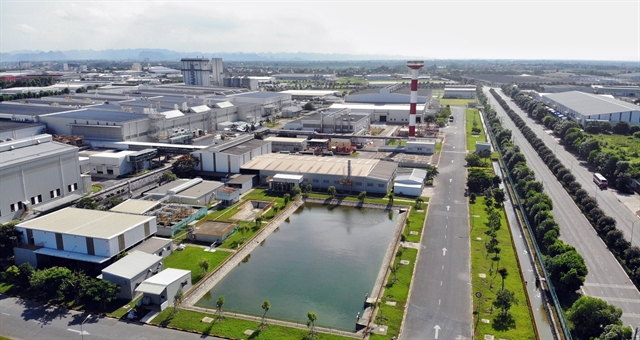 Economy
Economy


|
| A view of the Đồng Văn II Industrial Park in the northern province of Hà Nam. — VNA/VNS Photo Danh Lam |
HÀ NỘI — Việt Nam should improve the mobilisation of investment in infrastructure for industrial parks, particularly for ecological industrial parks, which have faced significant challenges in recent years, according to the Financial Association of Industrial Parks (FAIP).
Industrial parks have become the major focus in attracting domestic and international investment projects, with major global corporations investing in them. Domestic and foreign businesses operating in industrial parks contribute approximately half of the country's total export turnover (as of the end of 2022) and make important contributions to the national budget.
According to data from the Ministry of Planning and Investment (MPI), there are currently 414 industrial parks established in 61/63 provinces and cities nationwide, covering a total area of nearly 127,000 hectares. There are also over 1,000 industrial clusters with a total area of more than 31,000 hectares.
Dr. Ngô Công Thành from the Institute of International Investment Research (ISC), said limitations such as the quality and effectiveness of investment policies not meeting development requirements. Collaboration within and between industrial parks, economic zones, and regions, as well as subpar innovation, sustainability issues, and imbalances in socio-economic and environmental aspects, remained significant hurdles to overcome.
Experts said investors, limited by financial capacity, often waited to find other investors before investing in shared infrastructure, which creates a dilemma as they may have to wait for a long time. This situation has led to low occupancy rates in many industrial parks.
To mobilise capital for investment in industrial parks in the coming years, fundamental changes were required to facilitate the flow of funds. FAIP said it's willing to provide all necessary support to businesses and management agencies in seeking solutions to mobilise resources for the robust development of Việt Nam's industrial parks and economic zones, aligning with the direction of green and sustainable growth.
Dr Lê Minh Nghĩa, Chairman of the Vietnam Financial Consulting Association, said the main focuses include promoting industrial park development, tax and fee policies, investment policies, credit policies and land policies. However, the role of credit policies remained relatively unclear in practice, and financial resources for the development of technical infrastructure in industrial parks were limited.
Dr Cấn Văn Lực, an economic expert at the Bank for Investment and Development of Vietnam (BIDV), suggested solutions to address financial challenges, emphasising the need to complete institutional frameworks, expediting the review process for industrial park real estate projects, implementing approved socio-economic development plans, and allocating public investment for upgrading infrastructure connecting industrial parks.
He stressed the importance of special policies for ecological industrial parks, and financial institutions' need to implement guidelines and instructions from the State Bank of Vietnam (SBV) and the Ministry of Finance (MoF) to support capital and tax policies.
FAIP has served as a bridge between industrial park businesses, state management agencies, international investors, and foreign economic and financial organisations to mobilise resources, especially for the development of industrial parks in the country. — VNS




